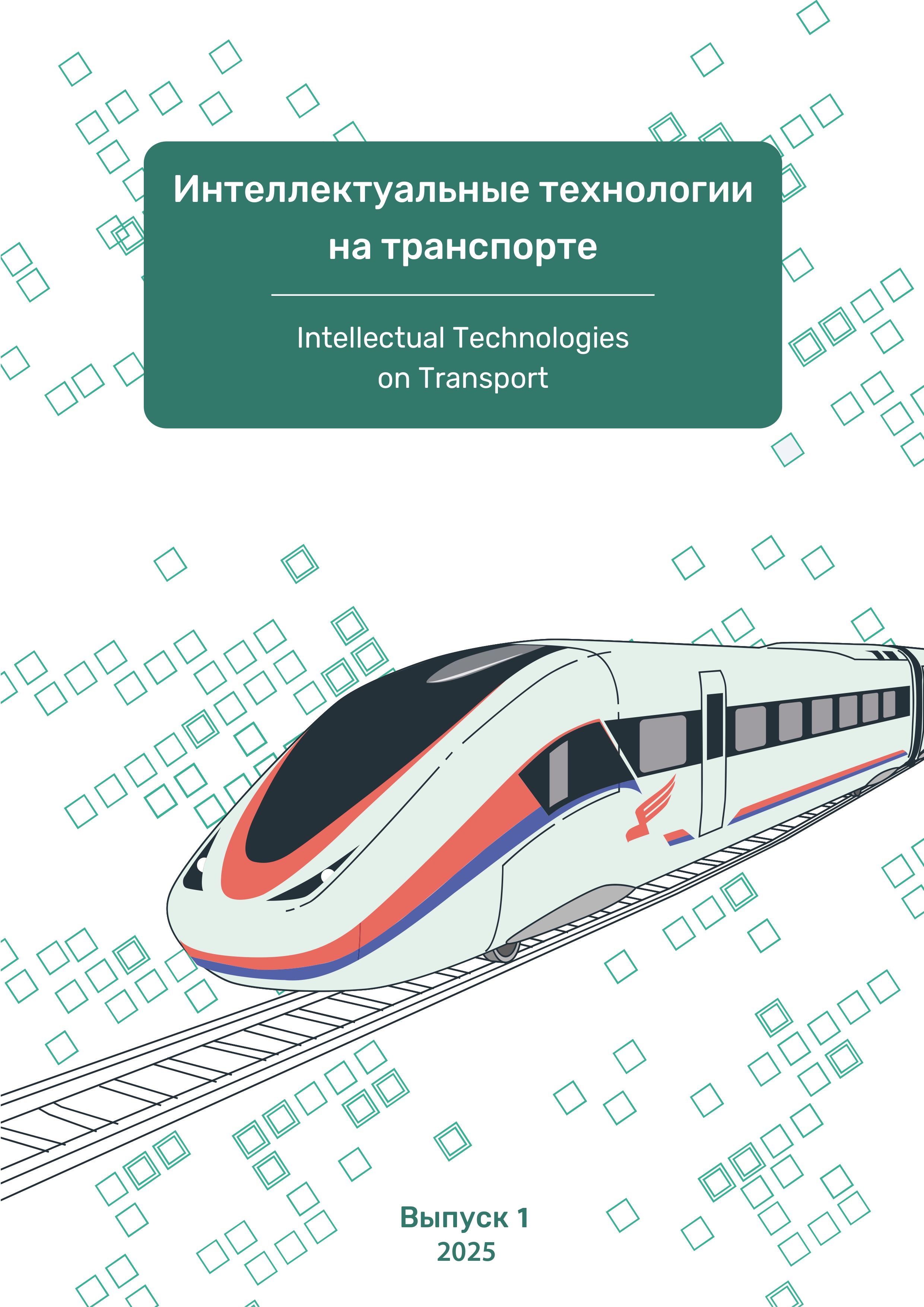Saint-Petersburg, St. Petersburg, Russian Federation
Russian Federation
Russian Federation
Russian Federation
UDC 519.833.2
Analysis of train movement strategies for reducing delays using Nash equilibrium is a complex process that requires consideration of many factors affecting the transportation efficiency and costs. One of the key aspects considered in the paper is maintaining train traffic under variable time costs, namely, downtime due to track repairs or rolling stock breakdown. The paper proposes an optimized solution for selecting the train routes. Dijkstra’s algorithm is used to find the shortest route. The paper also analyzes the average time cost expectation for each strategy. The Nash equilibrium has been found that accounts for the interaction between the transport system participants. Purpose: to find an equilibrium for train movement in case of emergency; to create an optimal train schedule considering the above factor. Information technology, data analysis and other innovative approaches were used to achieve this goal. Methods: analysis of modern tools and technologies including mathematical modelling. Results: to emphasize the importance of train traffic management and organizational aspect of rail transport operation. Practical significance: the analysis of train movement strategies for reducing delays requires an integrated approach that includes the analysis of many factors, the interaction of various participants and the use of modern technologies. This allows improving the quality of passenger service as well as increasing rail transport efficiency.
transport system, Dijkstra's algorithm, mathematical expectation, Nash equilibrium, route selection strategy, rail network, route efficiency
1. Makarov I. S., Gorbachev R. A., Fomin N. V., et al. Intellektualnaya sistema operativnoy korrektirovki grafika dvizheniya poezdov [Intelligent System for Operational Adjustment of Train Schedules], Zheleznodorozhnyy Transport, 2021, No. 5, Pp. 22–25. (In Russian) EDN: https://elibrary.ru/LQXBTL
2. Zakharova E. M., Paschenko F. F., Takmazyan A. K., et al. Intelligent Control Systems for Maintenance of Railway Rolling Stock, Proceedings of the 11th IEEE International Conference on the Application of Information and Communication Technologies (AICT 2017), Russia, Moscow, September 20–22, 2017. Vol. 1. Institute of Electrical and Electronics Engineers, 2017, Pp. 423–425.
3. Silver D., Hubert T., Schrittwieser J., et al. A General Reinforcement Learning Algorithm That Masters Chess, Shogi, and Go Through Self-Play, Science, 2018, Vol. 362, Iss. 6419, Pp. 1140–1144. DOI:https://doi.org/10.1126/science.aar6404.
4. Stipić A., Bronzin T., Prole B., Pap K. Deep Learning Advancements: Closing the Gap, Proceedings of the 42nd International Convention on Information and Communication Technology, Electronics and Microelectronics (MIPRO), Opatija, Croatia, May 20–24, 2019. Institute of Electrical and Electronics Engineers, 2019. Pp. 1087–1092. DOI:https://doi.org/10.23919/MIPRO.2019.8757133.
5. Mazalov V. V. Matematicheskaya teoriya igr i prilozheniya: uchebnoe posobie [Mathematical game theory and applications: A tutorial]. Saint Peterburg, LAN Publishing House, 2016. 448 p. (In Russian)
6. Petrosyan L. A., Zenkevich N. A., Semina E. A. Teoriya igr: uchebnoe posobie [Game theory: A tutorial]. Moscow, Vysshaya Shkola Publishing House, Universitet Publishing House, 1998, 304 p. (In Russian)
7. Zorkaltsev V. I., Kiseleva M. A. Ravnovesie Nesha v nelineynoy transportnoy modeli [Nash Equilibrium in Nonlinear Transport Problem], Optimizatsiya, Upravlenie, Intellekt, 2007, No. 1, Pp. 42–50. (In Russian) EDN: https://elibrary.ru/VRQXYN
8. von Neumann J., Morgenstern O. Teoriya igr i ekonomicheskoe povedenie [Theory of games and economic behavior]. Moscow, Nauka Publishers, 1970, 707 p. (In Russian)
9. Protasov I. D. Teoriya igr i issledovanie operatsiy: uchebnoe posobie [Game theory and operations research: A tutorial]. Moscow, Gelios ARV Publishing House, 2003. 368 p. (In Russian)
10. Myerson R. B. Game theory: Analysis of conflict. Cambridge (MA), London, Harvard University Press, 1991. 581 p.
11. Solomon M. M., Desrosiers J. Survey Paper — Time Window Constrained Routing and Scheduling Problems, Transportation Science, 1988, Vol. 22, No. 1, Pp. 1–13. DOI:https://doi.org/10.1287/trsc.22.1.1.










